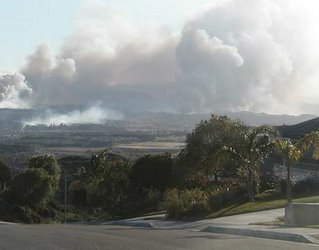
Posted by John Keller
Military technology never seems to last long in a vacuum. When one breakthrough system is developed, something able to counter its capabilities usually follows closely behind.
We can see this phenomenon from ancient times. The invention of the stirrup -- every bit as significant as the machine gun and the atom bomb -- enabled soldiers to fight fast and hit hard from horseback. It wasn't long, however, until infantry learned to form squares with spears protruding outward to repel cavalry charges.
The machine gun led to trenches and other concealment. Heat-seeking and radar-guided missiles? Enter flares and chaff dispensers to confuse the missiles' guidance systems. To counter visible-light sensors like cameras and the naked eye, soldiers for centuries have thrown up smoke screens, often with great affect.
Smoke has met its match in recent years with the infrared sensor, which detects heat instead of reflected light. IR sensors are extremely effective at penetrating smoke, dust, and other obscurants. The problem is these sensors are progressively becoming less expensive and more widely available.
The Army has developed separate smoke-emitting weapons to fool visible-light and infrared sensors, but has no one weapon that can counter both. How to regain the edge?
Wired's Danger Room blog has a story entitled Army Looking for Infrared Smoke Screens that talks about efforts at the U.S. Army Aberdeen Proving Ground, Md., to develop a bi-spectral smoke/obscurant -- or one kind of smoke screen to hide soldiers from visible-light and infrared sensors.
The Army has issued a Small Business Technology Transfer (STTR) solicitation open from 19 Feb. to 19 March for companies to solicit ideas on developing bi-spectral smoke/obscurant material. "This material will form an obscuring screen for the protection of soldiers and platforms against visible and infrared threats (heat seeking missiles, thermal viewer, laser guided missiles, sniper fire, etc.)," the solicitation states.
Intensive chemistry and material science, breakthroughs in vapor phase synthesis, and nanotechnology may be involved in this new bi-spectral obscurant, Army researchers say.
Now let's see what's eventually developed to counter this new weapon.
No comments:
Post a Comment